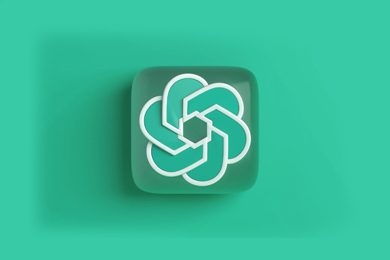This plan includes
- Limited free courses access
- Play & Pause Course Videos
- Video Recorded Lectures
- Learn on Mobile/PC/Tablet
- Quizzes and Real Projects
- Lifetime Course Certificate
- Email & Chat Support
What you'll learn?
- Provides the basic Quality Management knowledge.
- learn Fundamentals of quality improvement
- Describe the Seven Basic Quality Tools.
- Analyze Data and Business Situations with some basic statistics concepts
- Understand hw to utilize data for improvement
- Complete understanding of Systems, processes and Quality
- Comprehensive understanding of the seven quality tools.
- Enhanced decision-making abilities.
- Opportunities for professional development.
- Development of quality management competencies.
Course Overview
In a course on mastering basic quality tools, you can expect to learn a variety of techniques and methodologies used for improving and maintaining quality in different industries and processes.
you can expect to learn the following:
-
Understanding the basic quality tools: The course will provide a comprehensive understanding of the seven basic quality tools and their significance in quality management.
-
Tool selection and application: You will learn how to identify the appropriate quality tool to address specific problems or situations. The course will guide you on when and how to apply each tool effectively.
-
Tool utilization in real-world scenarios: The course will provide practical examples and case studies from various industries to demonstrate the application of quality tools in real-life situations. This will help you better understand how these tools can be used to improve processes and solve quality-related issues.
-
Data analysis and interpretation: You will learn how to collect, analyze, and interpret data using basic quality tools. This includes techniques such as creating and interpreting control charts, Pareto diagrams, histograms, scatter diagrams, and cause-and-effect diagrams.
-
Problem-solving and decision-making: The course will teach you how to utilize the basic quality tools as part of a systematic problem-solving and decision-making process. You will learn how to identify root causes, prioritize issues, and make data-driven decisions to improve quality and efficiency.
-
you will understand the basic concept of quality management.
Overall, the course aims to equip you with the knowledge and skills to effectively utilize the basic quality tools and drive continuous improvement in various industries and processes.
our promise :
We are dedicated to fulfilling our responsibility of teaching our students, and we are fully committed to it. If you have any inquiries regarding the course or any other topic related to the course, feel free to post a question in the course or reach out to us via direct message.
But wait, there's more!
By the end of this course, your confidence in utilizing quality tools will skyrocket. You will gain a comprehensive understanding of how to effectively employ quality tools.
Don't hesitate to click the enroll button, and I eagerly await your presence in lesson 1 of this quality tools course!
Pre-requisites
- No Prior Experience Needed
- This tutorial offers a comprehensive and condensed overview of the seven basic quality tools.
- Anyone curious to master basic quality tools
- Basic understanding of quality management principles.
- Proficiency in relevant software tools (e.g., Microsoft Excel, statistical software).
- Access to course materials .
- Time commitment to attend sessions and complete assignments.
- Reliable internet access for online components.
Target Audience
- Anyone curious to master basic quality tools
- Supervisors and Managers
- Process Owners
- Process Improvement Professionals
- Quality Professionals
- Quality Assurance Engineers
- Operations Managers
- Manufacturing Engineers
- Product Development Engineers
- Healthcare Quality Managers
- Quality Consultants
- Any professionals involved in ensuring and improving the quality of products, services, or processes within their organization.
Curriculum 89 Lectures 08:37:40
Section 1 : Introduction to quality
- Lecture 2 :
- Introduction to quality
- Lecture 3 :
- The Pillars of Quality Management:
- Lecture 4 :
- Introduction to Total Quality Management (TQM):
- Lecture 5 :
- Elements of Total Quality Management (TQM):
- Lecture 6 :
- Continuous Quality Improvement (CQI)
- Lecture 7 :
- Types of Quality Measures:
- Lecture 8 :
- Characteristics of a Good Quality Measure:
- Lecture 9 :
- Tips for choosing the right quality tools
Section 2 : Check sheet
- Lecture 1 :
- Introduction to Check Sheets
- Lecture 2 :
- When to use a check sheet
- Lecture 3 :
- Classification check sheet
- Lecture 4 :
- Step-by-Step Check Sheet Procedure:
- Lecture 5 :
- Exploring the Benefits of Using Check Sheets:
- Lecture 6 :
- Pro Tips for Effective Check Sheet Implementation:
- Lecture 7 :
- Distinguishing Quality Checklist from Quality Check Sheet
Section 3 : Run Chart
- Lecture 1 :
- Exploring the Run Chart
- Lecture 2 :
- Types of Data Suitable for Run Charts:
- Lecture 3 :
- Understanding the Importance of Run Charts:
- Lecture 4 :
- Key Components of a Run Chart:
- Lecture 5 :
- Rules for Interpreting Run Charts:
- Lecture 6 :
- Analyzing Findings from Run Chart Interpretation:
- Lecture 7 :
- Contrasting Run Charts with Control Charts:
- Lecture 8 :
- Limitations of Run Charts:
Section 4 : Pareto Chart
- Lecture 1 :
- Introduction to Pareto Charts:
- Lecture 2 :
- Understanding the 80/20 Rule:
- Lecture 3 :
- Exploring Pareto Analysis:
- Lecture 4 :
- Determining When to Use a Pareto Chart:
- Lecture 5 :
- Key Features of Effective Pareto Charts:
- Lecture 6 :
- Recognizing Limitations of Pareto Charts:
- Lecture 7 :
- Tools for Creating Pareto Charts:
Section 5 : Histogram
- Lecture 1 :
- Introduction to Histograms:
- Lecture 2 :
- Differentiating Between Bar Graphs and Histograms:
- Lecture 3 :
- Determining When to Use a Histogram:
- Lecture 4 :
- Normal Distribution
- Lecture 5 :
- Understanding Skewed Distributions:
- Lecture 6 :
- Exploring Double-Peaked or Bimodal Distributions:
- Lecture 7 :
- Plateau or Multimodal Distribution
- Lecture 8 :
- Understanding Edge Peak Distribution:
- Lecture 9 :
- Exploring Comb Distribution:
- Lecture 10 :
- Understanding Truncated or Heart-Cut Distribution:
- Lecture 11 :
- Exploring Dog Food Distribution:
Section 6 : Scatter diagrams
- Lecture 1 :
- Introduction to Scatter Diagrams:
- Lecture 2 :
- Unveiling the Power of Scatter Plots:
- Lecture 3 :
- Utilizing Scatter Diagrams in Analysis:
- Lecture 4 :
- A Comprehensive Guide to Scatter Plots:
- Lecture 5 :
- How to Read a Scatter Diagram?
- Lecture 6 :
- Exploring Different Types of Scatter Plots:
- Lecture 7 :
- Understanding Correlation in Scatter Diagrams:
- Lecture 8 :
- 8.Pearson Correlation Coefficient
- Lecture 9 :
- Recognizing Shapes of Correlation in Scatter Plots:
- Lecture 10 :
- Evaluating the Strength of Correlation in Scatter Plots:
- Lecture 11 :
- Patterns of Correlation in Scatter Diagrams:
- Lecture 12 :
- Addressing Interpretation Issues in Scatter Plots:
- Lecture 13 :
- Exploring Limitations of Scatter Diagrams:
- Lecture 14 :
- 14.Conclusion
Section 7 : Introduction to Control Charts:
- Lecture 1 :
- 1.Control chart
- Lecture 2 :
- 2.Shewhart chart or run chart
- Lecture 3 :
- Application of Control Charts:
- Lecture 4 :
- Benefits of Using Control Charts:
- Lecture 5 :
- Addressing Control Chart Inquiries:
- Lecture 6 :
- Exploring Types of Control Charts:
- Lecture 7 :
- Understanding the Control Chart Decision Tree:
- Lecture 8 :
- Implementing Warning Limits on Control Charts:
- Lecture 9 :
- Defining Specification Limits:
- Lecture 10 :
- Understanding Control Situations:
- Lecture 11 :
- Interpreting Control Chart Patterns:
- Lecture 12 :
- Applying Nelson Rules for Interpreting Control Charts:
Section 8 : Introduction to Flowcharts:
- Lecture 1 :
- Introduction to Flowcharts:
- Lecture 2 :
- Determining When to Use Flowcharts:
- Lecture 3 :
- Exploring Levels of Flowcharts:
- Lecture 4 :
- Creating Flowcharts: Step-by-Step Guide:
- Lecture 5 :
- Understanding Flowchart Symbols:
- Lecture 6 :
- Exploring Types of Flowcharts:
- Lecture 7 :
- Tools for Creating Flowcharts:
Section 9 : Understanding Stratification:
- Lecture 1 :
- Understanding Stratification:
- Lecture 2 :
- Applications of Stratification in Quality Control:
- Lecture 3 :
- Determining When to Use Stratification:
- Lecture 4 :
- Potential Pitfalls of Stratification:
- Lecture 5 :
- Example of Stratification:
Section 10 : Introduction to Cause-and-Effect Diagrams:
- Lecture 1 :
- Introduction to Cause-and-Effect Diagrams:
- Lecture 2 :
- 2.Fishbone Diagram Benefits
- Lecture 3 :
- Key Concepts of Cause-and-Effect Diagrams:
- Lecture 4 :
- 4.Fishbone application
- Lecture 5 :
- Exploring the 5M/5P Framework:
- Lecture 6 :
- Understanding Cause-and-Effect Sequence Relationships:
- Lecture 7 :
- Key Strengths of the Cause-and-Effect Diagram Tool:
- Lecture 8 :
- Procedure for Creating Fishbone Diagrams:
- Lecture 9 :
- Pitfalls to Avoid in Fishbone Diagrams:
Our learners work at
Frequently Asked Questions
How do i access the course after purchase?
It's simple. When you sign up, you'll immediately have unlimited viewing of thousands of expert courses, paths to guide your learning, tools to measure your skills and hands-on resources like exercise files. There’s no limit on what you can learn and you can cancel at any time.Are these video based online self-learning courses?
Yes. All of the courses comes with online video based lectures created by certified instructors. Instructors have crafted these courses with a blend of high quality interactive videos, lectures, quizzes & real world projects to give you an indepth knowledge about the topic.Can i play & pause the course as per my convenience?
Yes absolutely & thats one of the advantage of self-paced courses. You can anytime pause or resume the course & come back & forth from one lecture to another lecture, play the videos mulitple times & so on.How do i contact the instructor for any doubts or questions?
Most of these courses have general questions & answers already covered within the course lectures. However, if you need any further help from the instructor, you can use the inbuilt Chat with Instructor option to send a message to an instructor & they will reply you within 24 hours. You can ask as many questions as you want.Do i need a pc to access the course or can i do it on mobile & tablet as well?
Brilliant question? Isn't it? You can access the courses on any device like PC, Mobile, Tablet & even on a smart tv. For mobile & a tablet you can download the Learnfly android or an iOS app. If mobile app is not available in your country, you can access the course directly by visting our website, its fully mobile friendly.Do i get any certificate for the courses?
Yes. Once you complete any course on our platform along with provided assessments by the instructor, you will be eligble to get certificate of course completion.
For how long can i access my course on the platform?
You require an active subscription to access courses on our platform. If your subscription is active, you can access any course on our platform with no restrictions.Is there any free trial?
Currently, we do not offer any free trial.Can i cancel anytime?
Yes, you can cancel your subscription at any time. Your subscription will auto-renew until you cancel, but why would you want to?
Instructor

6916 Course Views
5 Courses



 Tech & IT
Tech & IT
 Business
Business
 Coding & Developer
Coding & Developer
 Finance & Accounting
Finance & Accounting
 Academics
Academics
 Office Applications
Office Applications
 Art & Design
Art & Design
 Marketing
Marketing
 Health & Wellness
Health & Wellness
 Sounds & Music
Sounds & Music
 Lifestyle
Lifestyle
 Photography
Photography









-min.png?crop=smart&width=600&height=400)






